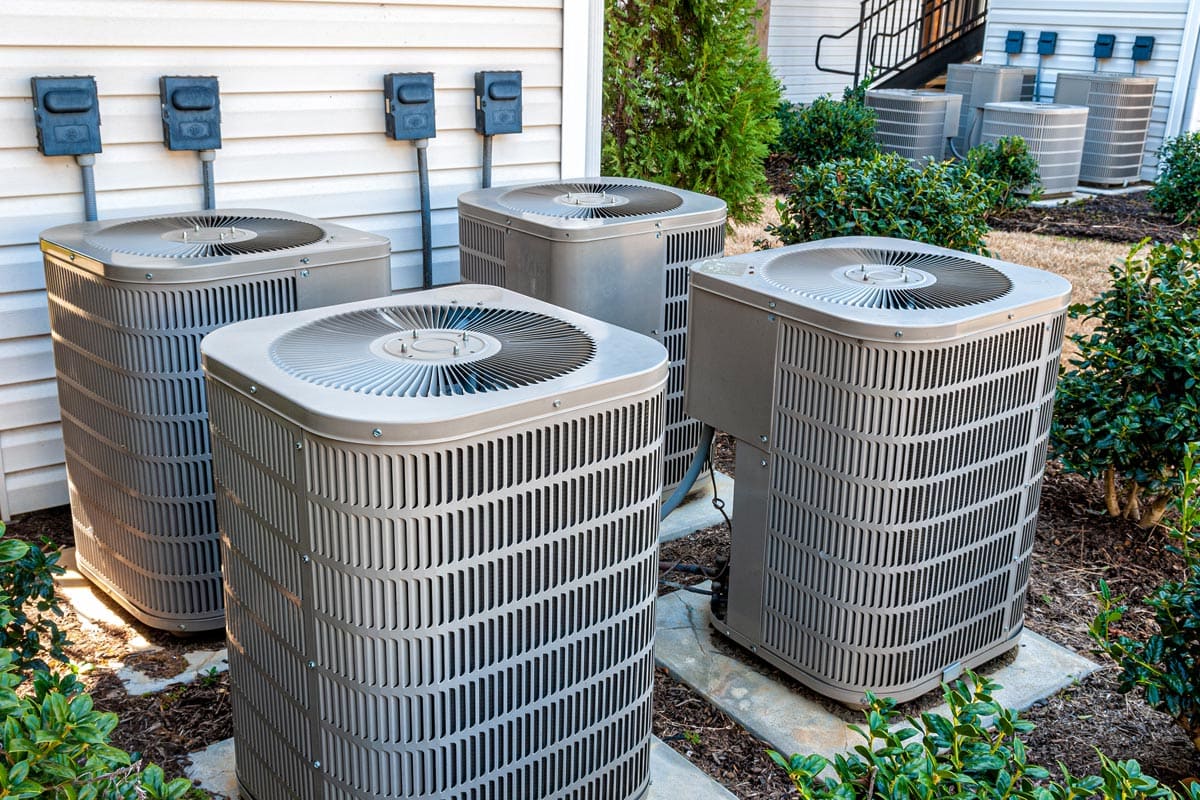If you are a DIYer, you may be wondering if it's possible to add R22 to your central air conditioner. And is this safe to do so on your own? Sometimes, certain issues with your air conditioner can necessitate a refill of R22. But should you do this yourself? And if so, how do you do it? We have research to answer these questions, and in this post, we will go over them with you.
Here are the steps to add R22 to your central air conditioner:
- Turn the a/c off
- Remove the valve caps
- Screw on the hoses
- Turn the a/c back on
- Open the refrigerant canister
- Open the pressure valve
- Monitor the temperature gauge
However, there are signs that the air conditioner will display when the refrigerant is low. Continue reading to learn the steps to add refrigerant to your central air conditioner and the signs to look out for when it needs a refill.

What Is R22?
Freon, also known as R22, is a refrigerant used for cooling systems in both home air conditioner units and motor vehicles. This particular refrigerant is a non-flammable gas that becomes compressed inside of the air conditioning system to become a liquid and cool down the air inside your home.
Steps to add R22 to Central Air Conditioner
It's worth noting that this gas can be toxic if it is inhaled in large amounts and hazardous if there is a leak. This is why it's generally recommended that you have a professional HVAC technician refill your R22 if you have no technical expertise in this area.

Things you'll need:
- R22
- Screwdriver
- Wrench
1. Turn the a/c off
Start by turning off your central air conditioner at the thermostat and then at the circuit breaker. Do this by turning the thermostat to the "Off" position and flipping the switch to the circuit breaker down.
2. Remove the valve caps
Next, go outside to your air conditioning unit and remove the valve caps of the a/c unit. To locate these valves, check the pipes on the side of the unit. They are usually located on the lower bottom portion of the unit. For some units, you may need an adjustable wrench to remove the valves. While others can simply be removed by hand.
3. Screw on the hoses
Next, take your left and right manifold hoses and screw them onto the air conditioning unit's left and right valves. Make sure that the gauges you use are specifically designed for R22.
4. Turn the a/c back on
Next, turn the air conditioner back on and wait about 10 to 15 minutes so that the unit has time to stabilize itself. This will help you get a more accurate reading of the gauges.
5. Open the refrigerant canister
Next, open the refrigerant canister. To do this, you need to twist the spout located on its bottom. Then, attach your third refrigerant hose to the third valve on the air conditioning unit. This valve should be located in the middle between the other to that you've already connected.
There should also be a small knob located on the bottom of the refrigerant. Turn this knob several times to the left to open the canister.
6. Open the pressure valve
Then, open the valve located on the left side of a canister. This is the low-pressure valve, and it will have a blue top. Open and close this valve for 4-5 seconds repeatedly to add coolant to the air conditioner unit. Continue to do this until the unit reaches its subcooling temperature.
7. Monitor the temperature gauge
As you continue to release the R22 into the air conditioning unit, monitor the gauge to check the target temperature. Allow the air conditioning unit to run for about 3 to 5 minutes. At this time, use the thermometer to check the PSI and super-heat temperature.
Instructions on how to do this will vary by air conditioner make and model, and you can refer to your owner's manual on how to ensure that you reach the right temperature without overcharging the unit. After the unit has been charged, disconnect all of the hoses and replace the removed valve caps. Be sure to store any remaining R22 in a cool, well-ventilated area that doesn't reach over 100 degrees Fahrenheit.
How much does it cost to put R22 in an air conditioner?

It depends on your location, but an R22 refill can cost anywhere from $100 to $300. Freon prices can range anywhere from $90 to $170 per pound, or the contractor may include the cost of the freon in your total.
When refilling the freon, contractors will also perform additional services to ensure that your air conditioner unit is running correctly. Here are some of the things that they may include:
Inspect the entire system from top to bottom
This includes looking at the inside of the door panel, inspecting the air filter, and checking the thermostat. The technician should also take off the cover from the unit to look at the wiring and ensure there are no discolored, burned, or disconnected wires.
Check the evaporator coils
The tech will generally look at the evaporator coils to ensure that they are not frozen, dirty, or clogged, as this can affect the air conditioner's ability to function.
Check for potential leaks
If the refrigerant is low, the technician should be able to tell you why. For example, the most common reason why the R22 may be low is because of a leak. The technician can run a test of your entire system to see where the leak is originating. They should also be able to repair the lake by fixing any cracked refrigerant lines or faulty components.
Make system recommendations
After checking all of the components of your system, the technician will make repair recommendations or suggest to you that the unit be replaced. If they decide the latter, be sure to gather an accurate understanding of everything that will be included with the install.
How often do you add freon to an AC unit?
Actually, you should never have to add additional refrigerant to your central air system. In fact, the only reason you'd ever needed to recharge the refrigerant is if the system experiences a leak.
This is because an air conditioning system doesn't utilize refrigerant like a car utilizes gas, meaning that it doesn't need to be refilled per "X" amount of system usage. So to say, if you suspect that the refrigerant is low, it's best to have a technician take a look at the system as soon as possible.
How do I know if my AC needs freon?

If your air conditioner is low on Freon, you will be able to tell fairly quickly. There are a few signs that the air conditioner will display when it's time for a recharge. Let's take a look at a few of the indicators.
The unit takes longer than usual to cool your home
If there is a leak of R22, the ventilated heat through your home won't be absorbed as quickly. This, in turn, makes it increasingly difficult for the air conditioning unit to properly transfer larger quantities of cold air into your home.
The air conditioner starts blowing warm air
This is one of the biggest and most common indicators that there is a refrigerant leak with your AC unit. However, you should troubleshoot the unit if you experience this, as it could also signal that the compressor is faulty or broken or that the thermostat is malfunctioning.
You notice a hissing sound
If there is a small refrigerant leak in your unit, you may not hear anything. However, larger leaks cause a hissing sound at their source. If this happens, don't risk your household being potentially poisoned, be sure to turn off the unit immediately in contact a technician as come as possible to inspect the system.
Is it bad to run AC with low freon?
It can be dangerous to run an AC that's low on Freon, as this can be a sign of a refrigerant leak. If the unit is leaking refrigerant, it's best to turn off the unit and inspect it as soon as possible. This will prevent the unit from overheating, damaging the compressor, and creating a potentially hazardous environment in your home.
Wrapping Things Up
We hope that this post has helped illustrate how to add R22 to your air conditioning unit. If you decide to perform this task yourself, be sure to monitor your air conditioning closely over the next few hours and days to ensure that the unit runs properly.
